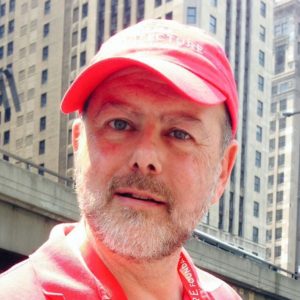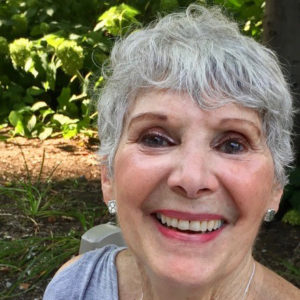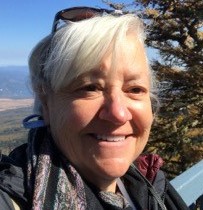Contributed by Emily Clott, Class of 2012
 As our celebration of 50 years of the docent program winds down, let’s give the last word to the most significant movers and shakers in our ranks–those who’ve taken on the unique responsibility of serving as Docent Council President. I reached out to former DC presidents listed in the directory, and received responses to these questions from most of them:
As our celebration of 50 years of the docent program winds down, let’s give the last word to the most significant movers and shakers in our ranks–those who’ve taken on the unique responsibility of serving as Docent Council President. I reached out to former DC presidents listed in the directory, and received responses to these questions from most of them:
- What were your goals when running for DC president and to what extent were you able to achieve them?
- Did you and/or the organization have any particularly exciting or troubling experiences during your tenure as president?
- On balance, was being president a positive or a negative experience for you?
Here, lightly edited, are their responses.
 Dan Fitzgerald, 1988-1990
Dan Fitzgerald, 1988-1990
My memory is not that clear from those early days when I was really active. I do have general themes still clear that included working closely with staff. There had been a somewhat Us vs Them mentality for some in docent council. Some were unhappy with some functions that docents controlled that were being turned over to staff. I really think we were growing up and came to the realization that the docent group was a large and active group, but we didn’t need to perform some functions that docent volunteers had been doing.
I’m really proud of the overall org change that took place when I was leading Docent Council. We started a cooperative relationship.

Michael Weiland, 1992
I served on Docent Council at a time when there was a fair amount of friction between the Docent Council and the CAF staff. As the CAF organization became more established and professional, there was some resistance about staff taking over some of the functions that docents had traditionally managed themselves. This was also when CAF moved its downtown presence from the Monadnock Building to the Railway Exchange, and the movement was afoot for CAF to divest itself of Glessner House. My hope as Council President was to foster a more productive, cooperative relationship between docents and staff.
One troubling incident occurred when bronze castings of Abraham Lincoln’s face and hands were stolen from Glessner House and mysteriously returned a week later. Suspicion that it was an “inside job” had everyone on edge.
Presiding over the Docent Council was a great experience, though I was crazy to take that on when I was working full time with a young child at home!
 Jane Buckwalter, 2001-2003
Jane Buckwalter, 2001-2003
One of my goals was to increase the number of docents participating in governance. At the end of my term, 70 individual docents…nearly double the number when I started…were doing so by serving on docent and Board committees. This represented approximately 20% of the docent body.
A few highlights: we instituted a peer development program (now DPRP); established a daytime tour committee that created noontime tours; met with Mayor Daley, and received a City Council proclamation honoring our 30th anniversary. Because Board president Jan Grayson attended nearly every DC meeting, we were able to add docents to three Board committees and include the entire council, not just the president, in the Board’s long-range planning workshop.
Being DC president meant advocating for docents’ views and concerns with staff and the Board. All three entities must work well together for CAC to fulfill its mission. Serving as president with a smart, dedicated, collegial council was an honor and a rewarding experience. And, it was fun!
 Donna Gabanski, 2003-2005
Donna Gabanski, 2003-2005
When my term began in 2003, there were so many ongoing projects that I felt my job was to keep the momentum going. Enthusiastic docents had created the Art Deco, Treasures, and Millennium Park tours and eight building tours. The docent web site expanded to include tour schedules, tab accounts, and the directory. We began a transition from a voluntary review program to the present performance review and created a new rewards structure. Docent Council meetings were lively with discussions of these projects.
A goal of mine became to keep docents informed of the new projects and encourage participation. And I felt one of the most important roles for the Docent Council president was reporting each month to the Board of Trustees about docent accomplishments and activities.
One of the best parts of this very positive experience was getting to know so many docents from various docent classes. I especially value the friendships formed among the council presidents from the first years of the 21st century. We consulted, cooperated, and continued to serve on council to support the docent program.
 Bobbi Pinkert, 2005-2006
Bobbi Pinkert, 2005-2006
It’s a bit of a joke among docents that I am a stickler for quality and accuracy in tours. This reputation was probably cemented during my presidential term, when the quest for quality morphed the Peer Development Program into the Docent Performance Review Program. This upgrade provided more than recommendations for tour improvement by providing a confidential record and concrete recommendations and incentives. As usual, docents embraced the chance to upgrade tour quality and welcomed feedback.
I also hoped to improve the appearance of the Docent Library since it had been a repository for old furniture, threadbare carpet, and poor lighting. With the generous help of fellow docent Barry Sears and the talent of interior designer Jessica LaGrange, the library became a warm and welcoming spot for study and friendly conversation.
Since my term coincided with some personal physical problems, working with and advocating for the docents became a wonderful oasis for me. It’s always my pleasure to be among this wonderful group of people.
 Jill Tanz, 2009-2010
Jill Tanz, 2009-2010
My primary goal when I ran for DC president was to be a strong advocate for the docents on the Board of Trustees. I wanted to make sure that docent interests were represented in the search for new space. I also wanted to improve docent involvement and communications with the Board and staff. I was successful in making sure docent needs were understood by the Board. I also advocated for and obtained docent representation on most Board committees.
During my tenure we set up the first on-line tour sign-up system. We overhauled the credit hour system to make it more equitable. I assisted in vetting the new staff volunteer coordinator, Hallie Rose, and I helped DC committees to understand and implement the CAF Strategic Plan.
Being president was a very positive experience. After serving on the Board for two years as DC President and two years as Docent-at-Large, I went on to join the Board as a regular member. I am proud of my past and present involvement in CAC governance.
 Mary Jo Hoag, 2011-2014
Mary Jo Hoag, 2011-2014
Looking back on my time as Docent Council President makes me chuckle because I was asked to consider becoming the president after only 4 years as a docent! Sometimes it’s great to not know enough to realize how much trouble you can get into! Although I had been the class of 2007 representative to Docent Council and was elected to the Council before becoming president, I was still pretty green. As luck would have it, I was surrounded by wise and willing former presidents and staff whom I often tapped for knowledge and inspiration.
The Board of Trustees, staff, and docents were about to embark on the 5 year strategic plan as I became President in 2011. In this plan the discussion began in earnest that would eventually lead to a new center for architecture. It’s was such a pleasure to work at envisioning what our future might hold over the next five years.
I’m particularly proud of imagining and implementing our CAC Core Values. This was another intense project where staff and docents worked together to identify the very values we live by every day.
My appreciation of volunteerism at CAC grew by leaps and bounds during and after my presidency. I remember telling people that I respect the CAC docents and volunteers so much that a group of us could be put in charge of almost anything and do a marvelous job. What an honor it was to be Docent Council president for 3 years!
 Ellen Shubart, 2014-2016
Ellen Shubart, 2014-2016
I consider myself one who serves CAC, and when asked if I would run for president, I said yes. I am both intrigued and in awe of the nature of the docent body, which is amazing and, as I have often said, should be a Harvard Business School case study. It is unique, as we both self-govern and self- regulate a body of close to 400 volunteers.
My goal for the presidency was simple: continue the great leadership of my predecessors, and keep the docent body running smoothly. We were on a roll back then, adding tours and providing service to an ever-increasing audience. Too many tours, though, was a disability; we could not market for them all. Ultimately, we cut the tours down to 85, a “magic number” we keep today.
Being president was fabulous. You get to meet so many docents, And there is always something to do to serve the docent body. When CAF moved up to the Architecture Center, no longer president, I was involved in the rewriting of all our tours that then began at 224 S. Michigan Ave. re-adapting them to start at 111 E. Wacker Drive. It was a years-long process, involving more than 100 docents. Making that happen made all the meetings worthwhile.
 Constance Rajala, 2017-2019
Constance Rajala, 2017-2019
Any plans I might have had before starting my term as DC president were radically changed when, in the spring of my first term, Lynn announced we were not renewing our 224 S Michigan lease and that we’d be moving. That launched 2½ years of intense activity: finding and approving a new location, building out the Center, raising funds for same and then re-evaluating and re-routing 11 core tours. DC also passed new rules about committee membership and used move-related downtime to make significant changes affecting docent life.
I hoped DC would become more activist, which did not always sit well with others. There was turbulence, but we made it through. Being DC president left me feeling that I knew more people more fully and that I had gained a better sense of the community as a whole. I also go to know staff and BoT members more closely and came away from those 3 years with a much better understanding of how the organization works.
 Kent Foutty, 2019-present
Kent Foutty, 2019-present
I came to Docent Council, and the presidency to try to make a better environment for all docents and to try to make sure that the docents continue to be the public-facing asset that everyone thinks of when they think of the CAC. And then.…COVID.
I had hoped to get more recent docents more involved earlier in their docent experience, and I had hoped to pair more docents with CAC staff. The stress of COVID has not really allowed for any of this.
But all has not been bad (or sad). The docents have been an important voice as we worked through what we could and should do, each step of the pandemic. The docent corps really stepped up; including CAC@Home and online tours gave us new avenues to reach the public.
Since I am still president, it is hard to reflect. At this point, I would think I will feel proud that I helped “hold it all together” during this awful time. But, as is always true when it comes to docents, SO many docents were instrumental in helping to make sure the CAC is not only surviving the pandemic but will thrive in the future.
_________________________________________________________________________

CLICK HERE for more posts on The Bridge


Such a valuable look at docent history through the lens of docent council presidents. Thanks, Emily and thanks to those who served as presidents.